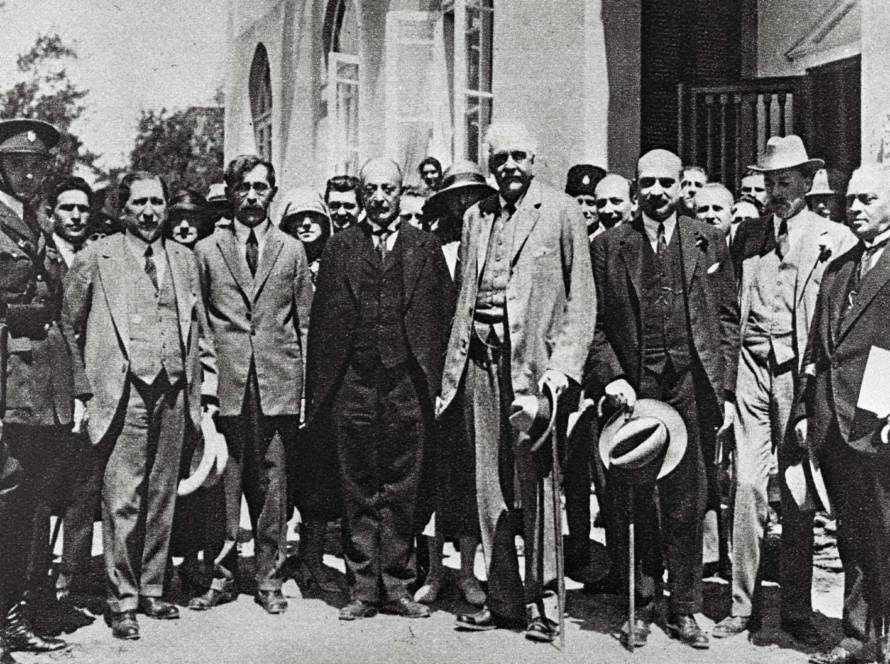By Vinod Moonesinghe
Growing US security concerns about China’s rapid technological progress have led to increased scrutiny of academic programs involving China or Chinese scholars. This has led to the resignation of experts such as Denis Simon from the University of North Carolina, who left due to restrictive government policies. Simon complains about university fears of funding cuts for campuses perceived merely as “close” to China.
This academic paranoia has prompted a significant number of Chinese scientists, who have long been instrumental in advancing technology and science in the US, to seek opportunities elsewhere. A report from the National Academy of Sciences revealed that the number of Chinese-born scientists leaving the US tripled between 2010 and 2021, and 72% of Chinese-American researchers surveyed reported feeling unsafe in this environment.
The situation is exacerbated by the fact that many researchers from China or foreign students have played a crucial role in the US’s advanced technology sector. The Cato Institute’s associate director of immigration studies David Bier complains that, since many US advanced technology researchers are Chinese nationals or foreign students, the restrictions pose challenges for US firms and research efforts.
Most of these researchers arrived in the USA as part of scholarship or exchange programmes dating back to the mid-1970s, in the wake of thawing Sino-US relations. These programmes have been drastically reduced consequent to the deterioration of those relations, and both their growth and decline have to do with geopolitics rather than the needs of science and technology.
Larger dimensions
Such programs are multi-faceted tools that nations and institutions use to achieve various diplomatic, political, economic, and cultural goals. The priorities and strategies of sponsoring countries determine the allocation and impact of these scholarships, which can have diverse effects.
Scholarship programs are often used for diplomacy, soft power projection, and regional influence. By offering scholarships to foreign students, countries can build goodwill, promote international understanding, and strengthen diplomatic relations. Scholarships can also be included in bilateral agreements to further educational and research collaborations, with broader geopolitical implications beyond education.
Economic interests can drive scholarship programs as well. Sponsoring countries may provide scholarships to students from nations with economic ties to bolster a skilled workforce knowledgeable about the sponsor’s businesses, technology, and industries. This, in turn, can benefit the sponsor’s economic interests overseas.
Scholarship programs are essential for attracting global talent to enrich academic institutions and the future workforce. Some recipients may choose to remain in the host country after their education, contributing to its economic and technological growth. Scholarships have become pivotal tools in the global competition for top talent, especially in fields like science, technology, and defense.
Moreover, scholarships aimed at fostering cultural exchanges and mutual understanding can help promote the host country’s values, culture, and educational institutions among foreign students. They also enable the host country’s students to gain exposure to different cultures and perspectives.
Long history
Scholarship programs have a long history, dating back to ancient civilizations. They have facilitated cross-cultural exchanges and knowledge dissemination throughout history. For example, the practice of taking hostages from allies in ancient Rome (for instance, the sons of Parthian emperor Frahad IV) served similar geopolitical functions to modern scholarship programs.
In China, the “Imperial Examination System” granted foreign scholarships as early as the 7th century, facilitating education and government positions in China for individuals from diverse regions and backgrounds. Similarly, during the Golden Age of Islam, foreign students received scholarships to study in prominent universities such as Baghdad, Cairo, and Cordoba. European universities in the Medieval era, such as Bologna and Paris, emulated these Islamic scholarship programs and attracted students from across Europe.
In the 20th century, international scholarship programs became well-established, with settler colonies offering traveling scholarships to their students to study in “home” universities. The establishment of the Rhodes Scholarships in 1902 aimed to promote British Empire unity and strengthen diplomatic ties between England, Germany, and the United States. It allowed exceptional students worldwide to study at Oxford.
In the aftermath of the Second World War, Senator J. William Fulbright proposed using the proceeds of sales of war surplus property to establish international exchange programs between the US and other nations.
In 1946 Congress set up the Fulbright Program, which became the largest education exchange initiative in history. It aimed to facilitate scholar and student exchanges with numerous countries, promoting cultural understanding and diplomatic ties. China became the first signatory to such a bilateral agreement in 1947. This program allowed students, scholars, and professionals to study, teach, and conduct research in both countries.
During the Cold War, international scholarship programs experienced significant growth as the USA and the USSR competed for influence in education and diplomacy, especially among developing countries. In 1956 the USSR established a scholarship programme for students from developing countries, creating Patrice Lumumba University for this specific purpose. By the mid-1960s, the Soviet Union hosted over 40,000 scholars from other COMECON countries and Third World countries.
A 1985 audit revealed that the primary US focus was not on educating future leaders but rather on surpassing the number of leaders educated by the Soviet Union. It expressed concerns about excessive funding directed towards nations with limited Soviet influence, while placing little emphasis on addressing the educational requirements of students from those regions.
In the post-Cold War era, the landscape of international scholarship programs continued to evolve. Russia reduced its focus on developing countries, changing Lumumba University’s. However, it has recently sought to regain influence through increased scholarship numbers and has restored Lumumba University’s name.
US-China scholarships
The first Chinese students went to the USA for studies in the 1840s. After the Second Opium War in 1860, China’s “self-strengthening movement” began, with some encouragement from the Qing establishment. This led to attempts to send students overseas to study in the early 1870s, although these initial efforts failed.
In 1900 the USA and seven other nations invaded China to suppress the Boxer Rebellion, consequently receiving reparations from the Qing regime. The US Government used these funds for the Boxer Indemnity Scholarship Program, enabling Chinese students to study in the USA. Around 1,300 students participated between 1909 and 1929. Many of these students achieved distinction, either returning to China or continuing to work in the USA, serving as a model for the Fulbright Program.
With the end of China’s “Century of Humiliation” in 1949, US hostility led to the termination of its scholarship programs aimed at that country, while the “Red Scare” caused scientists and scholars to return to China. However, during the “ping pong diplomacy” years before the formal recognition of China in 1971, the US prepared a framework swiftly to implement an academic exchange plan. When China expressed its intention to send research students abroad, the US initiated negotiations to create a reciprocal academic exchange program.
This program involved exchanging positions at leading American research institutes, primarily in the sciences, for American scholars gaining access to research opportunities in China, especially in the arts and social sciences, in institutions that had previously been off-limits to foreigners. These efforts expanded in the 1980s.
Since then, Chinese student numbers in the US surged, driven by scholarships and a growing middle class, as programmes such as Chinese Government Scholarship (CSC) incentivised Chinese students to study abroad.
Competition or collaboration?
China and the US have engaged in scholarship programs as part of their broader efforts to project influence and achieve strategic objectives. The US has funded various exchange programs to attract foreign talent, educators, and professionals. China, on the other hand, has used programs like the Chinese Government Scholarship (CSC) to support foreign scholars in China and expand its soft power through Confucius Institutes worldwide.
Both countries recognize the strategic importance of scholarship programs in shaping international perceptions, fostering people-to-people ties, and advancing their respective interests. This competition is part of the broader geopolitical rivalry between China and the US. These geopolitical tensions have impacted student enrollments, with shifting diplomatic changes and visa policies influencing student flow.
The COVID-19 pandemic further disrupted student mobility, with travel restrictions and online learning playing a significant role. The dynamics of student mobility continue to evolve in response to changing circumstances and policies.
In 2018, the US Department of Justice set up the China Initiative to prosecute individuals accused of economic espionage on behalf of China within American research and industry sectors. However, this initiative faced criticism for racial bias and the use of false evidence by the FBI. Concerns about racial profiling led to its closure in 2022.
The US-China rivalry has once again brought attention to the Chinese-American diaspora, raising concerns of technological espionage and divided loyalties. This situation underscores the intersection of domestic racial dynamics and international dealings with adversaries. Scholars like Professor Jian Junbo from Fudan University have highlighted the challenges to academic neutrality and objectivity caused by restricted scholarly interactions, growing nationalism, language barriers, and limited access to information in both countries.
Professor Jian emphasizes the importance of scholarly dialogue as a means of sharing information and resolving misunderstandings. He proposed several recommendations to improve US-China relations, including facilitating easier visa applications, promoting cooperation on global governance issues, addressing differing views on the international order, and establishing a stable, cooperative network of scholars, policymakers, and observers in the Asia-Pacific region.
These solutions require both sides to move away from national security policy-driven perspectives and adopt a more inclusive and collaborative approach to deepen their understanding of each other.
Vinod Moonesinghe read mechanical engineering at the University of Westminster, and worked in Sri Lanka in the tea machinery and motor spares industries, as well as the railways. He later turned to journalism and writing history. He served as chair of the Board of Governors of the Ceylon German Technical Training Institute.
Factum is an Asia Pacific-focused think tank on International Relations, Tech Cooperation, and Strategic Communications accessible via www.factum.lk.
The views expressed here are the author’s own and do not necessarily reflect the organization’s.


